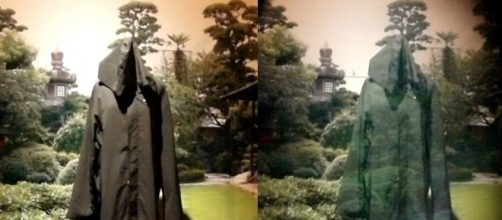The United States Patent and Trademark Office (USPTO) granted Toyota permission to design and enhance the visibility of drivers in its Cloaking Device features. The car giant manufacturer's involvement of innovative technology is increasing. The invisibility and visibility are trends of sci-fi movies like the "Star Trek: The Voyage Home," "Harry Potter's disappearing blanket," or "Frodo's Lord of the Rings." Scientists are trying to apply it to modern life.
Toyota's pursuit for car parts invisibility
Toyota joined the scientific community in research and development for the quest of the cloaking technology.
The USPTO received the patent application from Toyota describing it as " the apparatus and methods to make objects invisible or transparent." The patent, applied for in June of this year, is interesting as the enhancement of invisibility could be an improvement on road visibility for the driver, reports Futurism.
The patent aims to make the A-pillars of the cars invisible to provide the drivers with a better panoramic view while driving. Toyota seeks to make the pillars invisible since it grew wider due to safety standards and became an obstruction to the drivers' peripherals.
Various cloaking device technology
Toyota claims that the cloaking technology is already feasible since the development of the "Rochester cloak." This cloaking feature can be built using four standard lenses that allow an object to appear invisible.
The Jaguar Land Rover aims to use cameras on the outside of the pillars to show the image embedded on the inside. This approach also would make the area desired invisible.
How the cloaking device works
The Toyota approach to the cloaking solution is a much cheaper and simpler device to make. The technology would only use mirrors to manipulate light by bending visible light around the pillars allowing the drivers to see through them.
The drivers' visual peripherals will have a wider view of the road and surroundings. This feature will benefit not only the drivers but also the pedestrians and other vehicles as well.
The Toyota cloaking device patent describes the invention as further wrapping the intended pillar in a series of mirrors that will direct light around it.
This method will allow the driver and its passengers to view a clearer and wider perspective of the outside, reports Fox News.
Other Institutions doing R & D with the invisibility feature are the Max Planck Institute and the University of California, San Diego. The Max Planck Institute is developing the invisibility feature by applying nature's wonder of the moth eye that turns lenses and glasses invisible.
The University of California, San Diego approaches its solution by controlling the reflection of light on objects by the use of a thin carpet cloak from Teflon and Ceramic particles.
All researches bring the studies of an invisibility cloak closer to reality. We will soon be expecting its application, perhaps before 2023.


